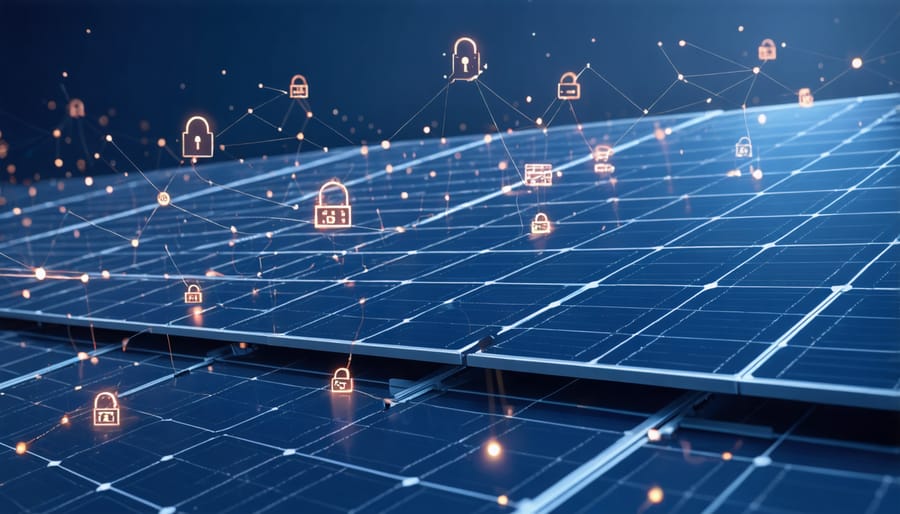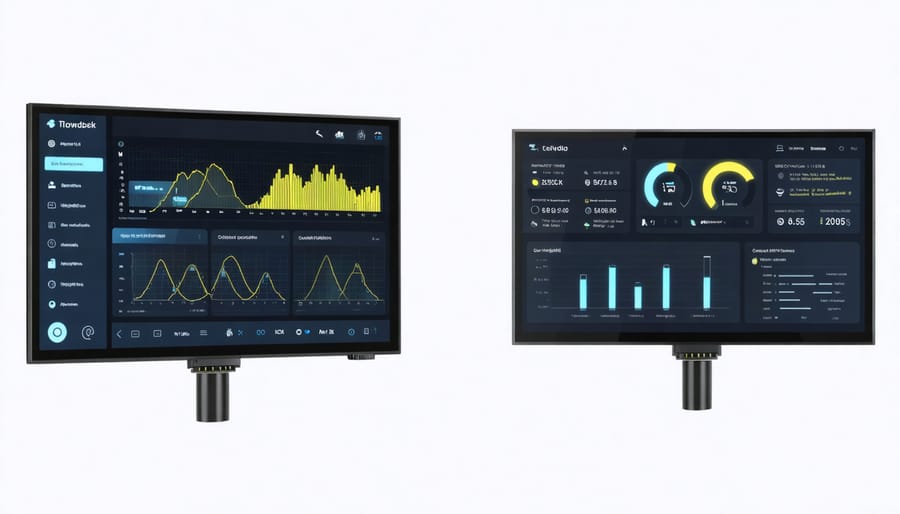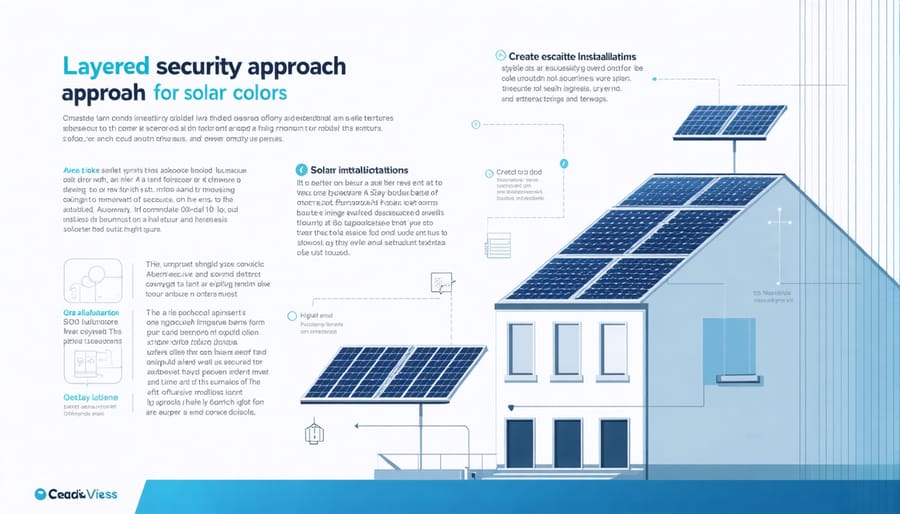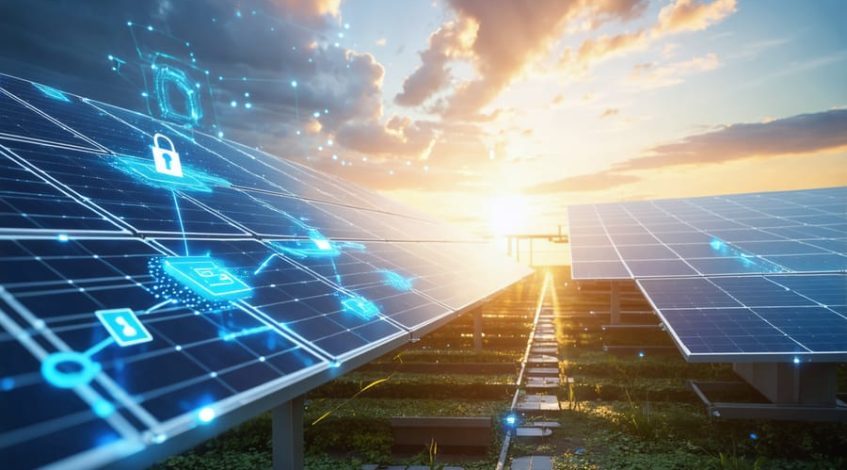Protect your solar investment from rising cyber attacks on solar systems through robust, multi-layered security protocols that safeguard both energy production and sensitive operational data. As solar installations become increasingly connected to smart grids and IoT networks, cybersecurity vulnerabilities pose unprecedented risks to energy infrastructure and business continuity. Recent industry analyses reveal that 60% of solar facilities lack adequate cybersecurity measures, exposing critical control systems to potential breaches that could compromise power generation, grid stability, and sensitive customer information.
The convergence of renewable energy and digital transformation demands a comprehensive security framework that addresses both physical and virtual threat vectors. From sophisticated firmware protection to encrypted communication protocols, modern solar installations require enterprise-grade cybersecurity solutions that ensure regulatory compliance while maintaining operational efficiency. Leading organizations now implement advanced monitoring systems, zero-trust architectures, and regular security audits to protect their solar investments against evolving cyber threats.
The Critical Role of Data Security in Solar Energy Systems

Types of Solar Energy Data at Risk
Solar energy installations generate and process various types of sensitive data that require robust protection. Energy production metrics, including real-time generation data, historical performance records, and efficiency ratings, provide valuable insights that competitors could exploit. Financial information, such as pricing structures, revenue streams, and return-on-investment calculations, represents critical business intelligence that must remain secure.
System performance data encompasses detailed technical specifications, maintenance schedules, and operational parameters that could expose vulnerabilities if compromised. Customer information, including billing details, usage patterns, and contract terms, requires stringent protection to maintain privacy and comply with data protection regulations.
Grid integration data, which includes power flow measurements, grid stability metrics, and interconnection parameters, is particularly sensitive as it affects both individual installations and broader utility networks. Equipment configurations, firmware versions, and control system settings must also be safeguarded to prevent unauthorized access and potential system manipulation.
Additionally, weather forecasting data and predictive analytics used for optimization represent proprietary information that contributes to competitive advantage. Protecting these data types requires a comprehensive security strategy that addresses both storage and transmission vulnerabilities.
Common Cyber Threats to Solar Infrastructure
Solar energy infrastructure faces several sophisticated cyber threats that can compromise system performance and security. Understanding these common cybersecurity blind spots is crucial for implementing effective protection measures.
Remote access vulnerabilities pose a significant risk, as many solar installations rely on internet-connected monitoring systems. Malicious actors can exploit these connections to manipulate power generation, alter system settings, or even cause equipment damage. Data theft is another pressing concern, with attackers targeting sensitive performance metrics and proprietary operating parameters.
Supply chain attacks have emerged as a growing threat, where compromised hardware or software components create backdoors for cybercriminals. These vulnerabilities can remain undetected for extended periods, potentially affecting multiple systems across an organization’s solar infrastructure.
Grid integration points present additional risks, as interconnected systems create more potential entry points for cyber attacks. Denial-of-service attacks targeting these connections can disrupt power distribution and system optimization, leading to significant operational and financial impacts.
Firmware manipulation and unauthorized configuration changes represent another critical threat vector, potentially compromising system efficiency and safety protocols.
Regulatory Compliance Framework for Solar Data Protection
EU Data Protection Standards
The European Union’s General Data Protection Regulation (GDPR) significantly impacts solar energy systems, particularly concerning data collection and processing from smart meters, monitoring systems, and energy management platforms. Solar facility operators must ensure their systems comply with GDPR’s strict requirements for personal data protection and privacy.
Key compliance requirements include obtaining explicit consent for data collection, implementing data minimization practices, and maintaining detailed records of processing activities. Solar installations must incorporate privacy by design principles, ensuring that cybersecurity measures protect personal data throughout the entire system architecture.
For solar energy providers operating in the EU, specific technical measures are mandatory, including:
– End-to-end encryption of personal data
– Regular security audits and vulnerability assessments
– Incident response procedures for potential data breaches
– Data protection impact assessments for new system implementations
The Network and Information Systems (NIS) Directive further reinforces cybersecurity requirements for essential services, including energy providers. Solar facilities classified as critical infrastructure must demonstrate robust security measures and report significant incidents to national authorities.
Recent updates to EU regulations have introduced additional requirements for energy sector digitalization, emphasizing the need for standardized security protocols in smart grid systems. Solar facility operators must stay current with these evolving standards while maintaining operational efficiency and data protection compliance. Non-compliance can result in substantial fines of up to €20 million or 4% of global annual turnover, whichever is higher.

Industry-Specific Security Standards
The solar industry adheres to several critical security standards and certifications designed to protect renewable energy infrastructure. The North American Electric Reliability Corporation Critical Infrastructure Protection (NERC CIP) standards serve as the foundation for cybersecurity compliance in the energy sector, establishing rigorous requirements for protecting critical assets and systems.
IEC 62443, specifically developed for industrial automation and control systems, provides a comprehensive framework for securing solar installations. This standard addresses various aspects of security, from risk assessment to system maintenance, ensuring robust protection against cyber threats.
The ISO 27001 certification plays a crucial role in solar operations, particularly for data management and information security systems. Solar facility operators increasingly pursue this certification to demonstrate their commitment to protecting sensitive operational data and customer information.
UL 2900-2-3, focused on network-connectable products, has become essential for solar inverters and monitoring systems. This standard ensures that connected devices meet stringent security requirements before deployment in solar installations.
For utilities and large-scale solar operations, compliance with the U.S. Department of Energy’s C2M2 (Cybersecurity Capability Maturity Model) helps organizations assess and improve their cybersecurity capabilities. The model provides a structured approach to implementing security measures across different maturity levels.
These standards continue to evolve as the solar industry faces new cybersecurity challenges, with regular updates addressing emerging threats and technological advancements.
Implementing Robust Solar Cybersecurity Measures

Technical Security Controls
Implementing robust technical security controls is essential for protecting solar energy systems from cyber threats. Modern solar installations rely on sophisticated proven cybersecurity strategies that incorporate multiple layers of protection.
Advanced encryption protocols secure data transmission between solar panels, inverters, and monitoring systems. Industry-standard AES-256 encryption protects sensitive operational data, while SSL/TLS protocols ensure secure communications across network components. Multi-factor authentication (MFA) systems restrict access to control interfaces, requiring users to verify their identity through multiple channels before gaining system access.
Network segmentation plays a crucial role in isolating solar infrastructure from other business systems. This approach contains potential breaches and prevents unauthorized lateral movement within the network. Continuous monitoring systems utilize artificial intelligence and machine learning algorithms to detect anomalies in real-time, alerting operators to potential security threats before they can cause significant damage.
Regular security audits and vulnerability assessments help identify potential weaknesses in the technical controls. Automated patch management systems ensure that all software components remain current with the latest security updates, while intrusion detection and prevention systems (IDS/IPS) actively block suspicious network traffic and potential cyber attacks.
These technical controls work in conjunction with physical security measures to create a comprehensive security posture that protects both the hardware and software components of solar energy systems.
Administrative and Physical Security Measures
A robust administrative and physical security framework forms the foundation of comprehensive solar cybersecurity protection. Organizations must implement clear policies that define roles, responsibilities, and access controls for personnel managing solar infrastructure. This includes establishing visitor management protocols, conducting regular security awareness training, and maintaining detailed documentation of system configurations and modifications.
Physical security measures should incorporate multiple layers of protection. Start with perimeter security using fencing, surveillance cameras, and intrusion detection systems around solar installations. Access to critical components like inverters, monitoring systems, and communication equipment should be restricted through electronic access control systems and tamper-evident seals.
Regular security audits and assessments help identify vulnerabilities in both administrative procedures and physical safeguards. Organizations should maintain an up-to-date asset inventory and implement strict change management processes for system modifications. Environmental controls, including temperature monitoring and fire suppression systems, protect sensitive equipment while reducing the risk of physical damage.
Employee background checks, security clearances, and confidentiality agreements are essential administrative controls. Organizations should also establish incident response procedures and conduct regular drills to ensure staff can effectively respond to security breaches. Maintaining detailed logs of physical access and system maintenance activities provides an audit trail for security investigations and compliance reporting.
Remember to coordinate physical security measures with cybersecurity controls to create a unified security posture that protects both digital and physical assets.
Future-Proofing Your Solar Security Strategy
As the solar energy landscape continues to evolve, organizations must adopt forward-thinking security strategies to protect their investments. Emerging threats, including sophisticated ransomware targeting industrial control systems and AI-powered attacks, require a proactive approach to cybersecurity.
To future-proof your solar security infrastructure, implement a multi-layered defense strategy that incorporates regular security audits, automated threat detection, and adaptive response mechanisms. Consider integrating emerging blockchain security solutions to enhance data integrity and secure peer-to-peer energy trading.
Key considerations for long-term security resilience include:
– Regular firmware updates and patch management protocols
– Advanced encryption for data transmission and storage
– Continuous monitoring systems with machine learning capabilities
– Employee training programs focused on emerging threats
– Regular penetration testing and vulnerability assessments
Industry experts predict an increase in IoT-based attacks targeting solar infrastructure. Prepare by implementing zero-trust architecture and microsegmentation to isolate critical systems. Additionally, consider adopting quantum-resistant encryption algorithms to protect against future quantum computing threats.
Establish partnerships with cybersecurity vendors specializing in renewable energy systems, and participate in industry information-sharing networks to stay informed about emerging threats. Remember that security is an ongoing process requiring constant evaluation and adaptation to new challenges.
As solar energy systems become increasingly interconnected, implementing robust cybersecurity measures is no longer optional but essential for long-term success. Organizations must take a proactive approach by conducting regular security assessments, maintaining up-to-date firmware and software, and establishing comprehensive incident response plans. Start by identifying critical assets and vulnerabilities within your solar infrastructure, then prioritize security investments based on risk levels and potential impact.
Key action steps include implementing multi-factor authentication, encrypting sensitive data, segmenting networks, and training staff on cybersecurity best practices. Engage with qualified cybersecurity professionals to develop a tailored security framework that aligns with industry standards and regulatory requirements. Regular monitoring and testing of security controls will help ensure continued effectiveness and compliance.
Remember that cybersecurity is an ongoing process rather than a one-time implementation. Stay informed about emerging threats and evolving security standards in the solar industry. By following these guidelines and maintaining vigilance, organizations can protect their solar investments while maximizing the benefits of clean energy technology. Consider working with industry associations and security partners to stay current with best practices and threat intelligence.

